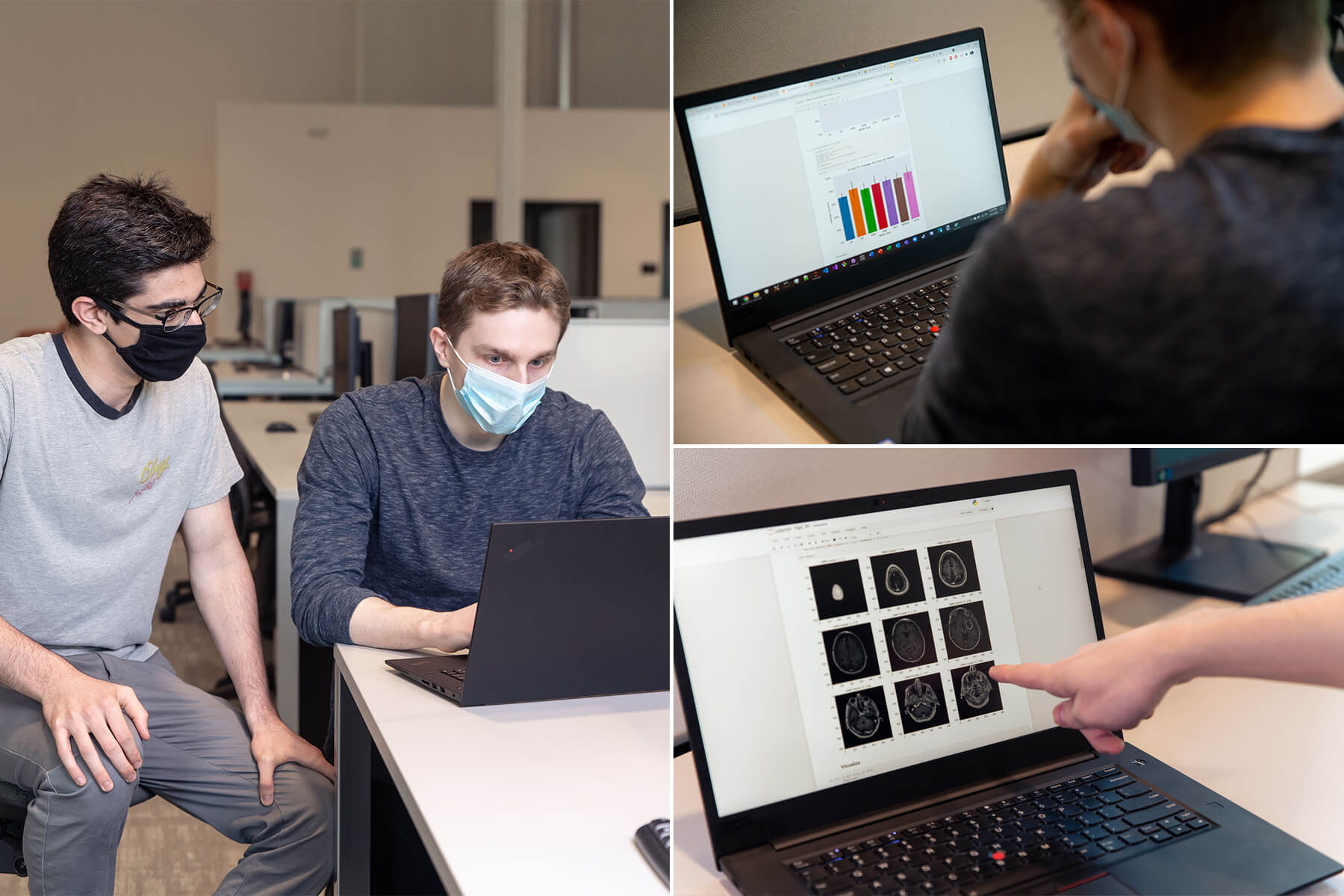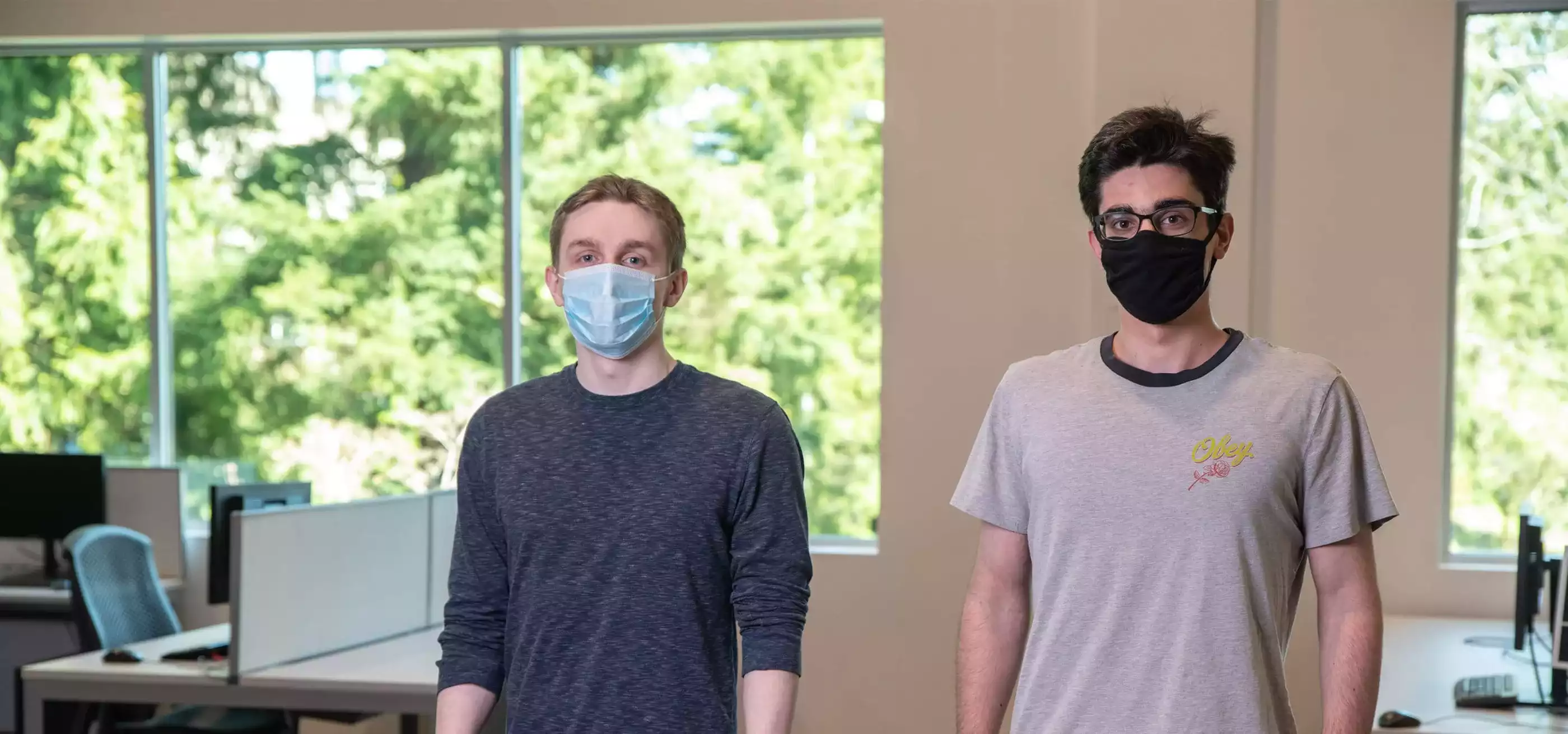Andrew Ardeleanu came to DigiPen to try and find solutions. “I think we live in a perfect time where we have copious data at our disposal. However, we don’t have the perfect tools to use that data to solve many of today’s real-life problems,” Ardeleanu says.
The inspiration to better wield the power of data led him to enroll in DigiPen’s new BS in Computer Science in Machine Learning program, where he and fellow program sophomores Eric Zander and Ryan Singleton quickly put their skills to humanitarian use. With the help and guidance of two DigiPen Department of Mathematics faculty, Drs. Yilin Wu and Barnabas Bede, as well as a partnership with Nova Southeastern University’s (NSU) Dr. Shuhua Zheng, the three Dragons have helped develop an artificial neural network (AAN) with the potential to optimize treatment for people suffering from a rare, aggressive form of cancer.
Wu and Zheng have been collaborating on the topic for years now, having co-founded the Artificial Intelligence in Oncology academic journal in 2017. “I reached out to [Zheng] to give us a lecture, trying to see whether our first cohort of machine learning students would be interested in a medical-related project,” Wu says. The prospect of working with Wu, Bede, and Zheng caught the interest of Ardeleanu, Zander and Singleton, who joined together on the medical research for their sophomore project class.
Beginning last fall, the group set about exploring machine learning applications for doctors evaluating patients suffering from glioblastoma multiforme, a fast-growing cancerous brain tumor that is difficult to treat. One major challenge is the tumor’s location in the brain, which makes taking a biopsy exceptionally high-risk. Without a biopsy, providing an accurate prognosis for patients is difficult. As a potential solution to this problem, the DigiPen/NSU research group began developing an artificial neural network that could instead deliver a non-invasive prognosis, while simultaneously recommending personalized, optimal chemotherapy levels for patients.

The group’s attempt to help people suffering from brain cancer actually meant replicating the human brain in a computer. “To put it simply, creating a neural network is very similar to creating a simplified emulation of the way the human brain works,” Ardeleanu says. “The goal of creating a functioning neural network is to create an environment where our AI can learn and predict how long a patient will survive based solely off the data that we provide for it.”
In this case, that data came from a number of public medical datasets, which covered everything from glioblastoma patient demographics, genetic samples, survival rates, and even MRIs. To determine a specific patient’s prognosis and receptivity to various chemotherapy levels, the patient’s own demographic information, genetic sample, and MRI would be fed into the AAN as well — then measured against the larger public dataset to produce a result.
If any of our research helps increase the effectiveness of targeted treatment decisions, that would be extraordinarily motivating.
“One of the biggest challenges with this project stems from a relative lack of data,” Zander says. “Machine learning models and ANNs in particular require quite a bit of data to perform well, and glioblastoma is a rare type of cancer. While we have a lot of data per patient, the lack of patients with readily available clinical, genetic, and image data has been a bottleneck for us.” In addition, training the computer to extract data from MRIs proved quite challenging — a task that required intense processing of complex 3D neuroimaging files. “That particular avenue has been an amazing learning experience, a reason to be excited about the intersection of machine learning and biomedicine, and a valuable lesson about over-scoping,” Zander says.
The students set about approaching the problem in multiple ways, attempting different algorithms, neural networks, and data analyses to see which worked best. “There are so many little details that go into creating a perfect neural network for a given problem, and it takes a lot of trial and error to try and create the most optimal solution for this problem,” Ardeleanu says. “The networks I’ve created have ranged anywhere from 30 percent all the way up to 85 percent accuracy, and there’s still a lot for me to learn when it comes to fine tuning such a complicated tool.”
While the 85 percent accuracy rate is impressive, the group says there’s still a long way to go before their tool is introduced in the real world, including further refinement of their algorithm and future clinical trials. Still, the students say the gravity of the work they’ve already done is inspiring. “The value of any of our results involves the improvement of treatment decisions regarding radiation therapy and chemotherapy, which are obviously notorious for their side effects,” Zander says. “If any of our research helps in making steps towards increasing the effectiveness of targeted treatment decisions, that would be extraordinarily motivating.”
